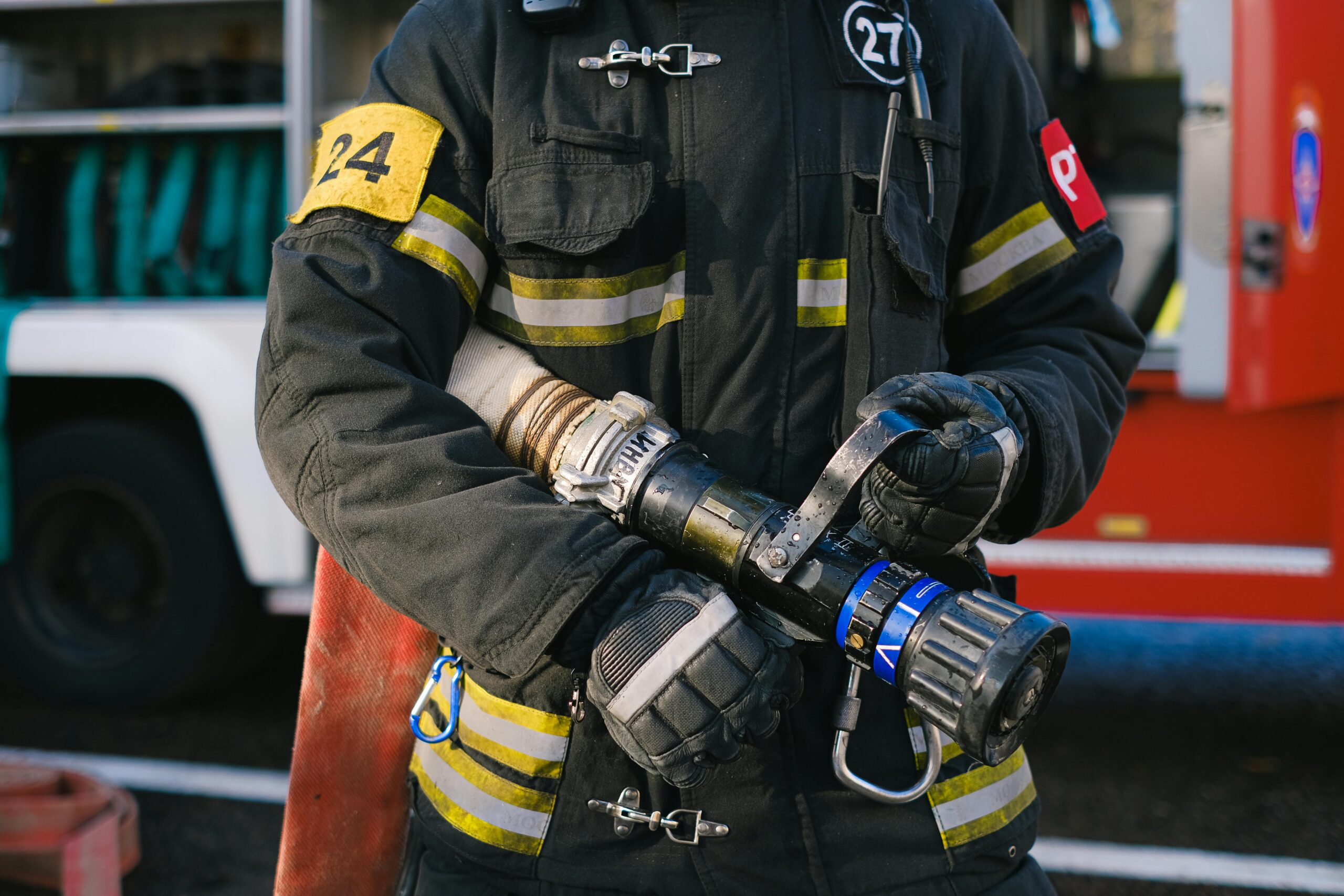In recent years, communities across the globe have been grappling with the alarming health risks posed by Aqueous Film-Forming Foam (AFFF) contamination. AFFF, extensively utilized in firefighting and emergency situations, contains hazardous per- and polyfluoroalkyl substances (PFAS). These PFAS compounds are associated with numerous health concerns, such as cancer, reproductive complications, and immune system disorders.
As awareness of these risks has grown, affected communities have mobilized to address the crisis, transitioning from passive concern to proactive action. In this article, we’ll delve into how communities transition from awareness to action, showcasing their inspiring efforts to combat AFFF contamination and safeguard public health.
AFFF Advocacy: Raising Awareness, Pushing for Change
Facing AFFF contamination, communities are taking action to protect their health and environment. Local residents and leaders have joined forces, forming passionate advocacy groups. They’re using social media, public forums, and local meetings to spread awareness about the dangers of AFFF.
These groups aren’t stopping there. They’re lobbying for stricter controls on AFFF, from production and use to disposal. Their message is clear: AFFF poses serious health risks, and safer firefighting solutions are needed.
Water Testing Programs to Combat AFFF Threat
In the wake of the AFFF health scare, communities are taking matters into their own hands to identify and address contaminated water. A primary focus is the implementation of thorough water testing and monitoring initiatives.
As reported by The Guardian, local authorities, frequently in collaboration with environmental agencies, are conducting routine assessments. These evaluations utilize advanced technology to identify PFAS concentrations in water sources. Some communities even involve residents in data collection efforts.
This proactive approach allows for early detection of AFFF contamination. Early detection is crucial, enabling swift action to prevent further health risks. The collected data serves a dual purpose: it acts as evidence in legal actions and informs decisions about water treatment and cleanup strategies.
Recent testing by the Department of Defense found PFAS contamination in water sources at 12 military bases across the country.
AFFF Lawsuits Target Manufacturers and Oversight Bodies
The growing number of AFFF lawsuits reflects a deep concern about the increased cancer risk associated with these firefighting foams.
According to TruLaw, victims of AFFF contamination are filing suit against manufacturers like 3M, DuPont, Tyco, and Kidde-Fenwal, seeking compensation for health damages. These lawsuits allege that manufacturers have known about the carcinogenic nature of AFFF for decades but have failed to act.
As reported by the Lawsuit Information Center, the lawsuits also target oversight bodies like the National Fire Protection Association (NFPA). Accusations claim the NFPA established testing standards that essentially mandated using PFAS-containing AFFF in firefighting equipment.
A recent court decision found that the NFPA may have engaged in unfair or deceptive practices and negligence. The court noted potential oversight in NFPA testing methods regarding PFAS chemical hazards, particularly under heat exposure.
Amid the unfolding crisis of firefighter foam-related cancer, firefighters are vigorously seeking justice through legal channels. As these legal battles progress, the emphasis on cancer-related claims within AFFF lawsuits becomes increasingly crucial. Victims are seeking restitution for health-related harms and endeavoring to establish responsibility for the enduring health hazards that AFFF poses.
Moreover, discussions surrounding AFFF lawsuit settlement amounts have become central to these legal proceedings. They reflect the ongoing efforts to ensure fair compensation and accountability in the face of this pressing public health crisis.
Knowledge is Power: Educating Communities on AFFF
Raising awareness plays a vital role in combating AFFF contamination. Communities are initiating extensive education and outreach initiatives to educate residents about the health hazards associated with AFFF exposure.
Workshops, seminars, and information campaigns are all part of the effort. They disseminate information about safer firefighting alternatives and offer actionable advice for reducing exposure.
This educational effort encompasses not only residents but also extends to first responders, educational institutions, and local businesses. By creating a community-wide understanding of the issue, these initiatives encourage responsible behavior and adopting safer firefighting practices.
Safer Solutions: Exploring Alternatives to AFFF
Communities impacted by AFFF contamination are looking for safer firefighting solutions. Traditionally, AFFF reigned supreme in tackling flammable liquid fires.
However, the tide is turning. Communities are currently dedicating resources to researching and developing environmentally friendly, efficient alternatives. Cutting-edge fire retardants, high-pressure water systems, and foam-free suppression agents are emerging as promising alternatives gaining traction.
According to the International Fire & Safety Journal, a complete switch from AFFF to fluorine-free alternatives might take time. Expect to see some continued use of AFFF in the coming years as regulations and requirements adapt. A recent FAA certification alert removes a prior requirement for fluorinated foams, signaling a move toward safer alternatives.
By moving away from AFFF, communities aim to minimize the environmental footprint of firefighting activities. This transition paves the way for a future where fire safety and environmental protection go hand-in-hand.
Community Health Programs Addressing AFFF Concerns
In the face of the AFFF health crisis, communities are putting their residents’ health first. They’re launching comprehensive health initiatives to address the physical and emotional impacts of AFFF exposure.
Health screenings, support groups, and access to mental health resources are being offered to those affected. Local healthcare providers are working hand-in-hand with community organizations to ensure these services are readily available.
These initiatives go beyond immediate health concerns. By fostering a supportive environment through support groups and counseling, they aim to build community resilience in the long run. Integrating these health programs into their response strategies demonstrates a commitment to the long-term well-being of their residents.
Frequently Asked Questions
What are communities doing to test for AFFF contamination?
Many communities are establishing water testing and monitoring programs to detect PFAS levels in their water supplies. These programs help identify areas with AFFF contamination and allow for swift intervention to prevent further health risks.
What legal measures are communities pursuing against AFFF manufacturers?
Communities are progressively initiating legal actions against AFFF manufacturers such as Tyco, DuPont, and 3M. These lawsuits accuse the manufacturers of being aware of the health hazards associated with AFFF but neglecting to take appropriate action. The communities are seeking restitution for health-related harm and holding the manufacturers accountable.
Are there safer alternatives to AFFF firefighting foams?
Yes. Communities actively explore and adopt alternative firefighting technologies like foam-free suppression agents, high-pressure water systems, and innovative fire retardants. The complete switch from AFFF might take time, but the focus is on finding environmentally friendly and effective solutions.
In conclusion, communities facing AFFF contamination are taking a stand for their health. They’re proactively tackling this challenge, from water testing to lawsuits and education campaigns to exploring safer firefighting methods. This united effort highlights a commitment to both accountability and a sustainable future.
Legal actions seek justice, while educational programs empower residents. Health initiatives address the human cost, and the search for alternatives prioritizes long-term safety. Through this comprehensive response, communities navigate a complex situation with resilience, determined to protect public health.



